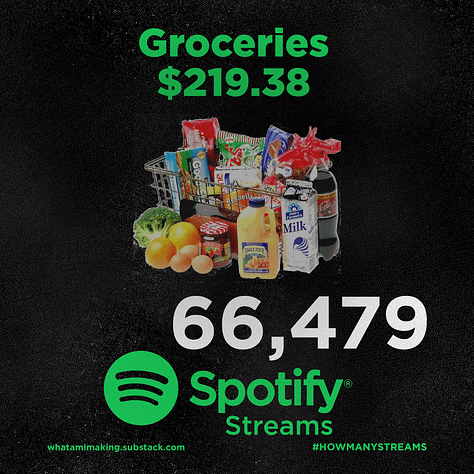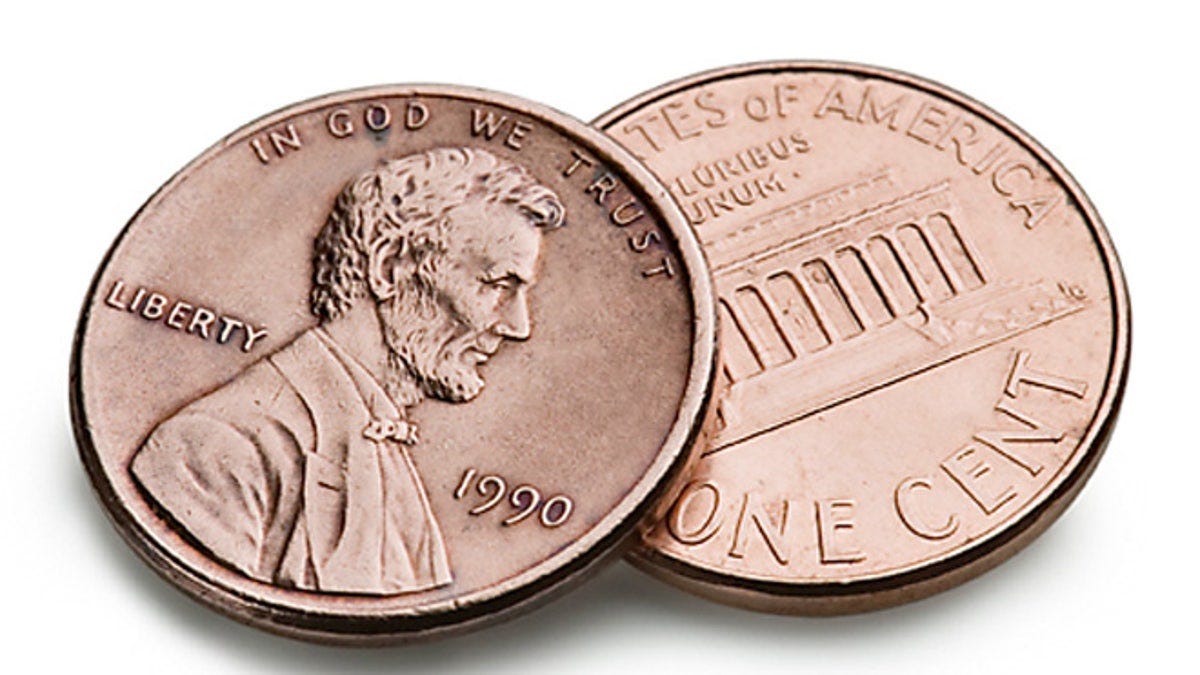What We Talk About When We Talk About Spotify
Five ways to change the unfairness of digital streaming
I recently posted my appraisal of the year end cavalcade that is Spotify Wrapped. The piece took Spotify’s annual listener stats and put them under the microscope to begin to understand just how little of the revenue that is generated by Spotify actually goes back to artists.
Immediately, on social media, text, and myriad other avenues, I began to hear from people in all walks of my life. Friends got defensive and began waxing poetic about how much they spent on vinyl this year. Other folks regaled me with their impressive list of live shows in 2023. Within minutes, everyone in my social sphere was justifying their music budget. Then there were those who simply saw it as the great deal for customers that it actually is, and they thought no more about it.
My hope was that the essay would force folks to acknowledge just how little of the money from their monthly subscriptions actually goes back to artists. What I received instead was the virtue signaling of well meaning music fans.
Essentially, this is a labor issue. Artists are being underpaid and exploited by streamers like Spotify. If you refuse to shop at Wal*Mart because of the way they treat their employees but still give money to Spotify, you might be a hypocrite. If you keep paying your monthly fees and never say a peep about what they’re doing to artists, you are a part of the problem no matter how much vinyl you buy.
This is not some effort to see us roll the clock back to the perceived golden age of physical media as our exclusive avenue for listening. We are living in a digital world and there is no going back. Instead of trying to force us back into some fantasy version of the past, let’s embrace a future where music is easily accessible, leaves a minimal carbon footprint and actually compensates the artists that make it.
I don’t want you to stop listening to Spotify! I want Spotify to pay artists and help them earn a living, and I want your help in making that happen.
Whatever your relationship with Spotify, and digital streaming at large, it’s hard for even the average music fan not to be aware of Spotify’s criminally low rates of compensation for the artists on their platform. The question is what, if anything, can be done about it?
Many music lovers, myself included, have invested heavily in vinyl records as a way to support artists. I have always loved vinyl records and the experience of playing them. Buying new albums, especially directly from artists, is a huge way to support them. But vinyl is expensive for both the customer and the artist/label.
Speaking as a label owner and an artist, vinyl is incredibly expensive, and for many artists is now a prestige item that they’re required to carry with them to shows even if it is only a break-even or lost leader product. For many smaller artists, vinyl is not the giant revenue source most assume it to be. For the listener, vinyl is also prohibitively expensive and getting more so by the week.
Artists do make good revenue from t-shirt sales. Like vinyl though, shirts and other physical merch require sizable upfront costs that can be prohibitive for smaller acts. And for bands unable or unwilling to tour regularly, physical merchandise is generally not a viable option for a revenue stream.
While vinyl and other physical merchandise is still an excellent source of potential revenue, it’s far from a guarantee even for seemingly successful artists. Touring can generate revenue, and for most active bands running as a full time business, live shows and the merch at said shows are the primary sources of income.
To tour requires a lot of money and prevents one from being in one place long enough to focus on an actual career. So, most musicians are forced into service jobs with little security, or longevity. The majority of musicians suffer without access to quality health insurance, and live paycheck to paycheck through gig economy jobs and low wage work. For artists not playing the theater, club and stadium level of venues, touring is far from a sure source of revenue.
Many fans and listeners that I have talked with about this subject have talked about how much they spend on live shows. That is a wonderful way to support artists you enjoy, but you are paying for the performance, not necessarily the music.
Do we want to create a market in which one has to be a mega-star to make a living off of their recorded work? What of the artists who can’t tour due to health issues or age. Why should we as fans be allowed to access music for fractions of a penny and then decide who we go and support with our dollars if they can somehow manage to make it to our area? That seems like a lot of hoops to jump through for a band to get paid for their work.
While it has become less expensive to record and release music it is anything but free. Modest home recording setups will still cost at least a few hundred dollars and the cost of whatever computer that will run the software. Once the work has been recorded and mixed, assuming the artist is capable of doing that well enough themselves, things like mastering, artwork, distribution, promotion and web presence are all real world costs that must be paid before a track can hit the ethernet.
So, how can we change the system and make it easier for artists to make a living?Like most complicated problems, there is not one big fix. This issue will require multiple adjustments, and the fixes that might be viable solutions are anything but easy. Still, they’re worth fighting for and could make a huge difference in the lives of working artists.
1. TWO CENTS A STREAM
Pass federal legislation to force Spotify and other streamers to pay at least TWO CENTS PER STREAM. There is federal legislation that guarantees minimum rates of pay for radio play but nothing like that for streaming. A new law with a two cent minimum would be an enormous boost for artists. Apple Music and Tidal already pay a cent or more per stream. Thet others have a long way to go to catch up.
Here is what the pay rates of the four major US streamers looks like.
Current Streaming Rates A Major Providers
Tidal - $0.013
Apple Music - $0.010
Amazon Music - $0.004
Spotify - $0.003
This act alone would solve the vast majority of the problems with digital streaming. Without public pressure, it will never happen.
2. ADD A DIGITAL TIP JAR
With a bit of in-house coding, streamers could easily allow listeners to tip the bands they love as they listen. We could even allow users to tip in small increments as well, like quarters or even dimes. Think of it as a guitar case laid out on the street next to a busker and you throw in the change from your pocket. Make it a large, easy to see button and even prompt listeners to tip in a non-pushy way. No need to spend $28 on one new vinyl record, you just toss a buck to your new favorite band and everyone feels good.
This must be in addition to, and not instead, of fair royalty payments, not as a replacement.
Spotify made a dismal attempt to do this in 2020 as a result of the pandemic, but it could be improved and enhanced to actually benefit artists.
3. ALGORITHM ADJUSTMENTS
All digital streamers could enhance their algorithms to focus more on independent and emerging artists. While I have no idea exactly how Spotify has set up their algorithm for recommending other artists, it’s clear that it’s largely based upon what other listeners of that particular act also listen to. In theory, that’s great, but it can keep pushing listeners back to the same music they already know.
I would suggest a system where 25%-35% of the suggested artists were new, emerging, and indie artists to help foster listenership in more underground acts. It would be fantastic to have it also incorporate geography as well, so you might be more likely to find acts that sound like the band you’re spinning within your own region.
If you’re streaming the Beatles, you probably don’t need to be told that you should also check out The Who, The Kinks, The Rolling Stones, etc. What if instead of eight obvious big rock acts from the British Invasion, it included two or three current acts that traffic in the same sonic territory? And maybe one that is playing down the road next month?
4. ROYALTY REPORTING
Digital streamers like Spotify should be required to disclose to their customers each month how much they actually paid out to artists. For example, if we achieve the requested rate of pay at two cents per stream, you should get monthly data to inform you that your 2,145 spins generated $4.29 in revenue for artists. From there, you can figure out how much Apple or Spotify made from your subscription. At least you and the artists will know what is being paid out.



5. INDEPENDENT ARTISTS INITIATIVE
While Spotify does have resources for its artists, they could be vastly improved and enhanced. Some sort of foundation or artists cooperative funded by all of the digital streamers’ revenue would be a great start. In essence, streamers could set aside fractions of a cent from each stream to set up an independent infrastructure designed to help foster and promote emerging artists.
These funds could then be used to set up physical production facilities to press vinyl, print shirts and posters, and more physical merch at reduced costs while helping to generate further monies for the foundation. This cash could also be used to spearhead ad campaigns for young and new artists. Funds could be used for micro-loans to new musicians. These sorts of programs could help get a new musician a laptop, microphone, guitar, or drum kit to kickstart a new dream.
With just a fraction of the massive amounts of revenue generated in digital subscriptions each month, these streaming outlets could transform our musical landscape, and the lives of those who shape it.
These five items alone will not solve this massive issue of cultural inequity, but it will go a long way to providing a more secure and stable life for hundreds of thousands of artists around the world. They will also help to foster an environment in which there is more opportunity for new and emerging artists to enter the music industry and attempt to make a life within it.
Under the best of circumstances, the music business is a tremendously difficult industry to operate within. As fans and supporters, we must do whatever we can to foster a culture in which the music we love is appreciated, and paid for.
If we do not demand it, it will never come to be.
Cheers,
Matty C











An often unspoken piece to this puzzle is that Google and Apple take 30% of all in-app transactions. That’s why many services don’t all you to subscribe in the app. So, if you had a digital tip jar that was build natively within your streaming app for every dollar donated Google or Apple would take $0.30. Compare that to most online payment processors which only take like 2% to 3%. It’s a major antitrust issue.
These are excellent ideas.